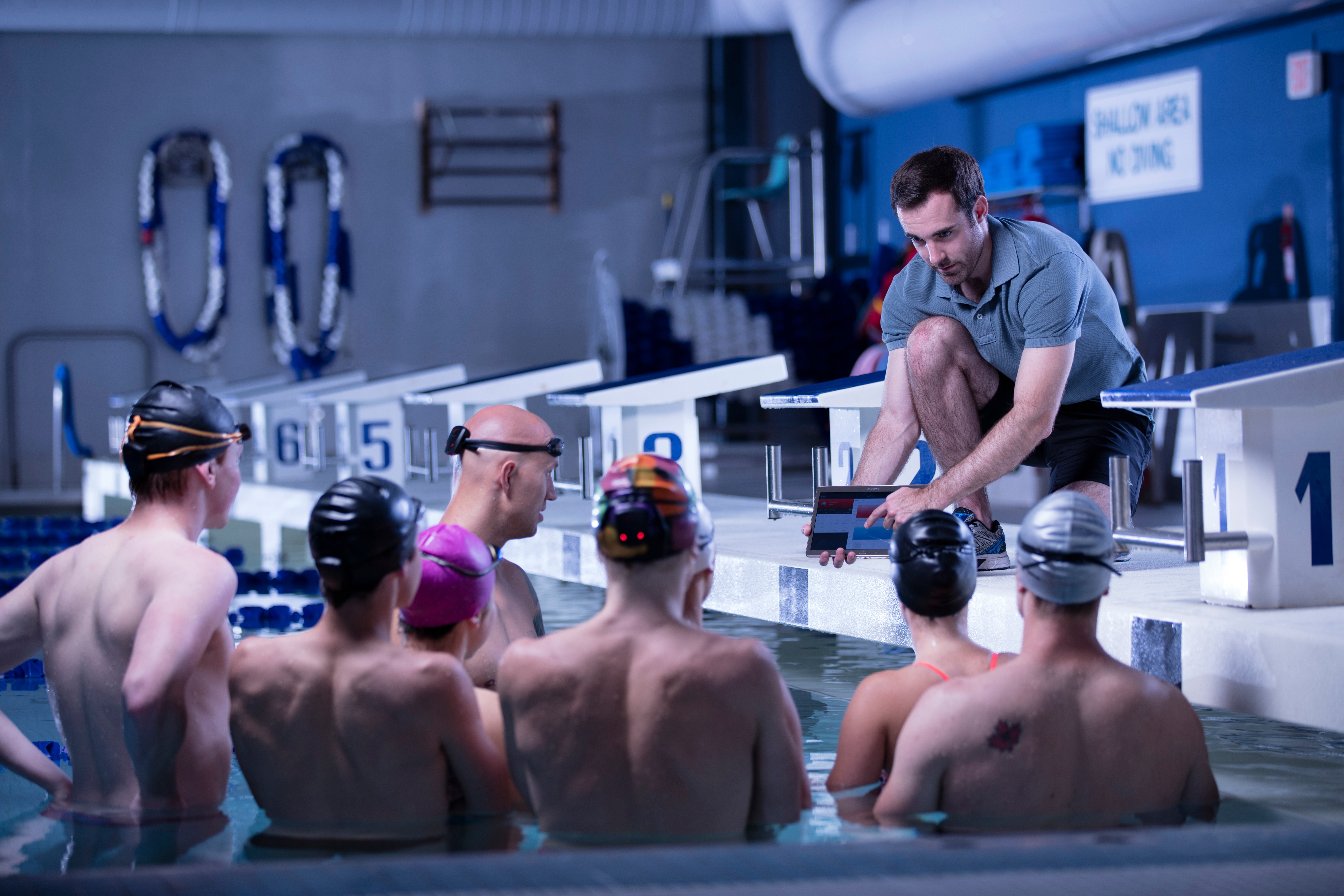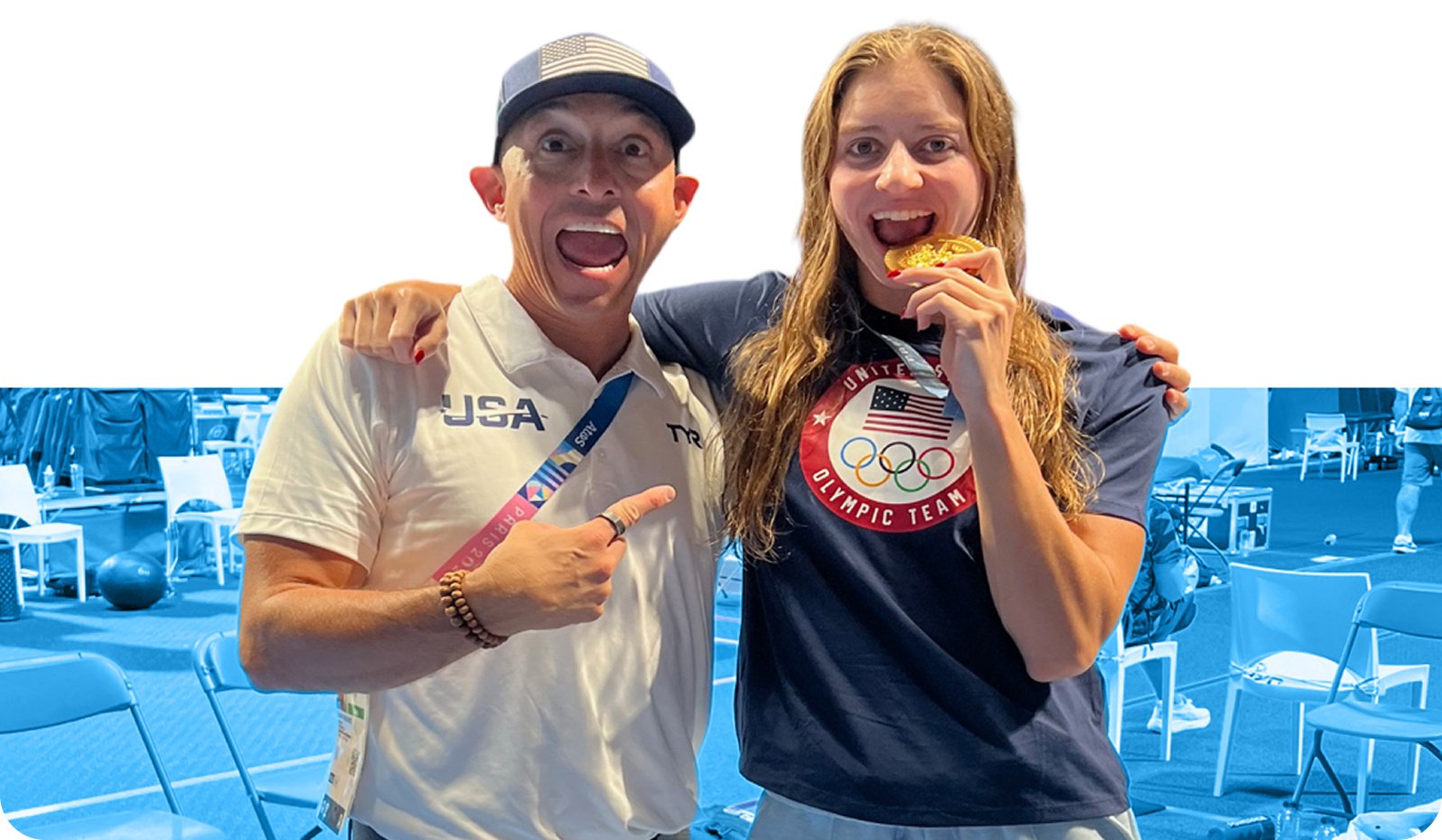Tracking metrics provides a significant advantage to athletes and coaches, and TritonWear offers 13 metrics, each measuring a specific aspect of a swimmer’s performance.
While each metric provides insightful data, choosing focal metrics is fundamental in tailoring technique and training to fit specific goals to each unique circumstance – whether they’re training for distance or sprint, for any given stroke.
Stay In The Know! Get access to tips, tricks and all things data to train better every day.
Distance Events
When it comes to the 400m/500y distance races and up, consistency is key. Athletes need to find the fastest pace they can maintain over the course of the entire distance. More than just swimming even splits, their metrics also need to remain consistent throughout their event. And, whenever a swimmer’s splits go up, the metrics can help locate what the swimmer struggled with specifically.
For swimmers who are looking to improve their mid- and long- distance swims, focus on Stroke Index, Stroke Rate, Stroke Count, and Breath Count.
Stroke Index 
Stroke index is an important metric for distance events because it measures a swimmer’s overall efficiency. Inefficient strokes lead to unnecessary energy expenditure, something a distance swimmer cannot afford to have.
Stroke index takes into account the distance per stroke (DPS) and speed per lap (DPS and speed are also individual metrics you can look up on the TritonWear app). The general goal for Stroke Index is to get a higher number: higher stroke index = higher overall efficiency. For distance events, you also want to ensure a consistent stroke index.
The 400m/500y and beyond distances are all about proper pacing, and fluctuations in stroke index could indicate that the swimmer needs to work on their endurance, or make adjustments to their pace. A swimmer is at their most efficient at the highest stroke index they can maintain over the course of the entire distance.
Stroke Rate 
Maintaining a consistent stroke rate is crucial for mid- and long distance swims. When it comes to the 400m/500y or longer distance races, fast stroke turnovers might not be the best strategy as it would be difficult to sustain throughout the distance (unless you are Katie Ledecky). For instance, a swimmer may start a 1500m/1650y race off at a fast stroke rate, but lose steam after the first 200, when they’re still basically at the beginning of the event.
Decreases in stroke rate could indicate that the arms or legs are starting to get heavy and the swimmer is struggling to keep their pace. Meanwhile, sudden increases in stroke rate throughout the distance could be due to the swimmer taking shorter, more inefficient strokes. A swimmer’s optimal stroke rate is the one they can maintain throughout the entire distance without compromising their form or stroke index.
Stroke Count and Breath Count 

Stroke and breath count go hand-in-hand in distance events, provided the swimmer follows a steady breathing pattern. The importance of stroke count when it comes to distance events is two-fold.
- Stroke count directly affects DPS, which in turn affects the stroke index, thereby impacting overall stroke efficiency.
- Strokes and breaths set the rhythm. Rhythm and timing are especially important in longer distances where the swimmer needs to keep a steady pace. Inconsistencies in stroke and breath counts can put the swimmer off-rhythm, which will negatively impact their pace and overall performance.
Sprint Events
While distance events are about proper pacing, sprints are about going all out from start to finish, no matter the stroke – instead of aiming for consistent metrics, aim to maximize them.
For swimmers looking to shave off a few seconds in their sprints, focus on Stroke Rate and Distance Per Stroke.
Stroke Rate 
Sprinters can benefit more from a faster stroke rate than distance swimmers. They can get away with pulling at a faster rate because there is not much need for them to pace themselves (with the slight exception of the 200m).
When it comes to sprints, slight differences in stroke rates could determine the results of a close race. However, while a faster stroke rate is preferable, it should not come at the expense of proper form or DPS.
Distance Per Stroke (DPS) 
DPS is crucial when it comes to sprints because when swimmers are racing for a much shorter period of time, literally every stroke counts. In this case, a swimmer can gain more by taking stronger, more efficient strokes than by expending energy on taking faster strokes that don’t propel them as far. With that said, sprinters also can’t afford to take too much time between each pull. It is crucial to find the balance between the swimmer’s DPS and stroke rate that will result in their fastest time.
Transitions
Whether a swimmer is training for distance or sprints for any stroke, they can surely benefit from improving their transitions, especially in short course races.
On distance events, again, consistency is key. Efforts on and off the wall quickly add up, more so for longer distances where a swimmer has to do multiple turns.
On sprint events, where the races are usually extremely tight and the margins of error are low, transitions can be the extra edge a swimmer needs to beat their personal best or win that split second victory.
For swimmers looking to gain that extra advantage on the transitions, focus on Turn Time, Push-Off Strength, and Time Underwater.
Turn Time 
This is an important metric for any event because shaving even just a fraction of a second off the turn time can lead to a significant decrease in overall time. In addition to the time a swimmer can save from a quicker turn, a good, fast turn sets them up for a strong push-off.
Push-Off Strength 
Push-off strength is measured as the swimmer’s speed upon leaving the wall. Higher push-off strength gives the swimmer more momentum to drive their dolphin kicks or breaststroke pull-out, allowing them to be more efficient with their time underwater.
Time Underwater 
The way a swimmer spends their time underwater is crucial for any event. Michael Phelps is a prime example for this.
A steady push-off, good streamlined form, and strong underwater kicks or breaststroke pull-out are essential for a powerful breakout, which typically dictates how the rest of the lap will go. Maximizing their time underwater could also give the swimmer the lead right off the wall and set them up for a successful race.



.png)


.png)